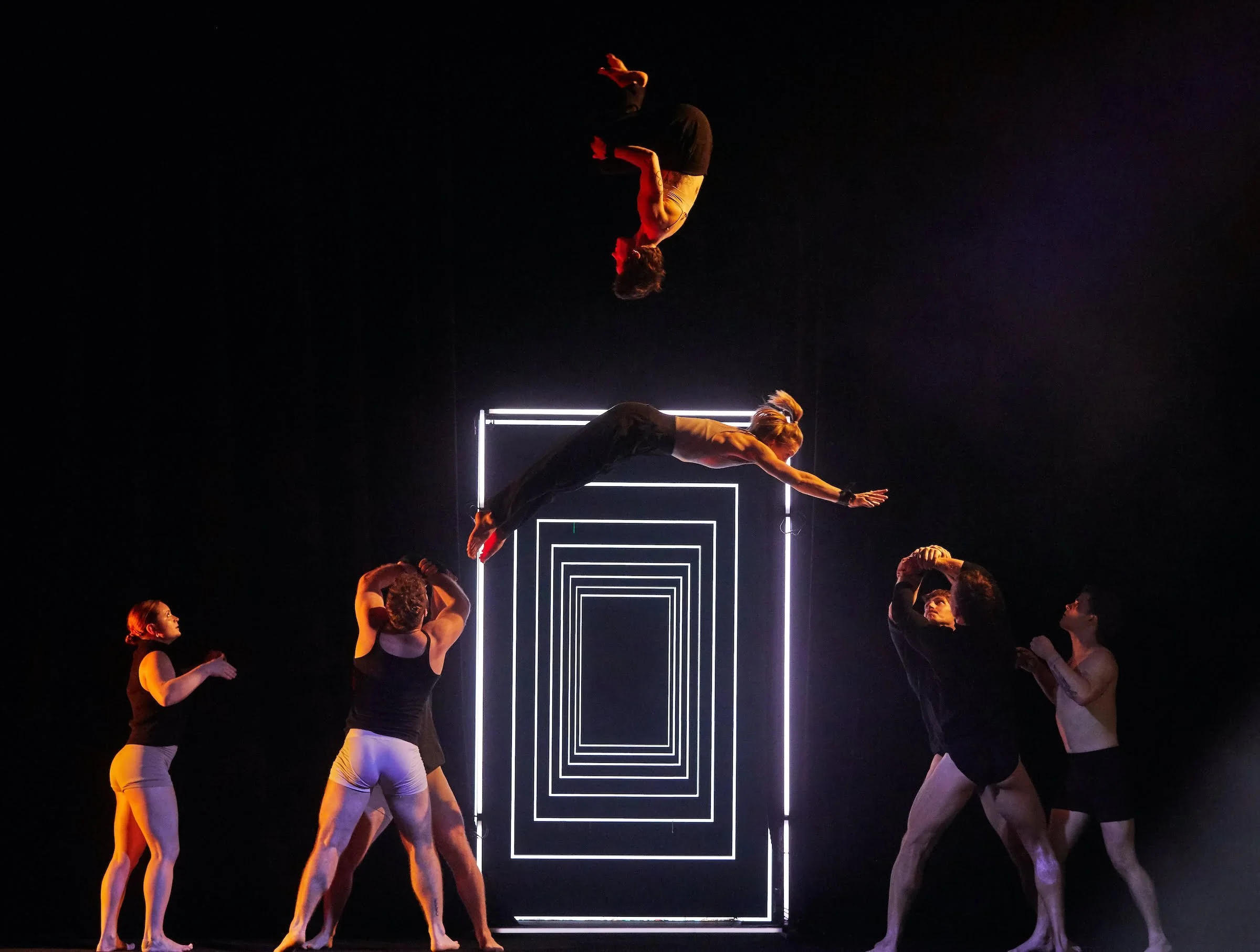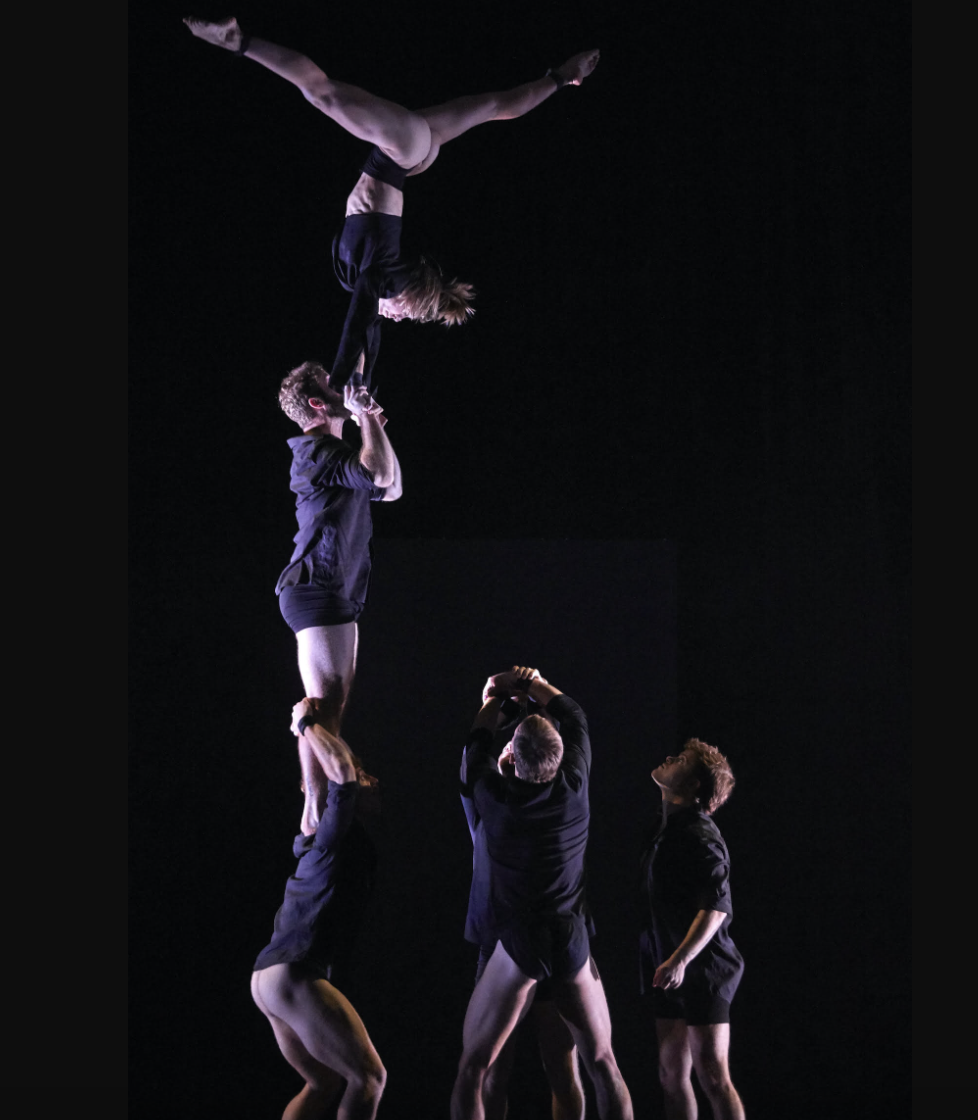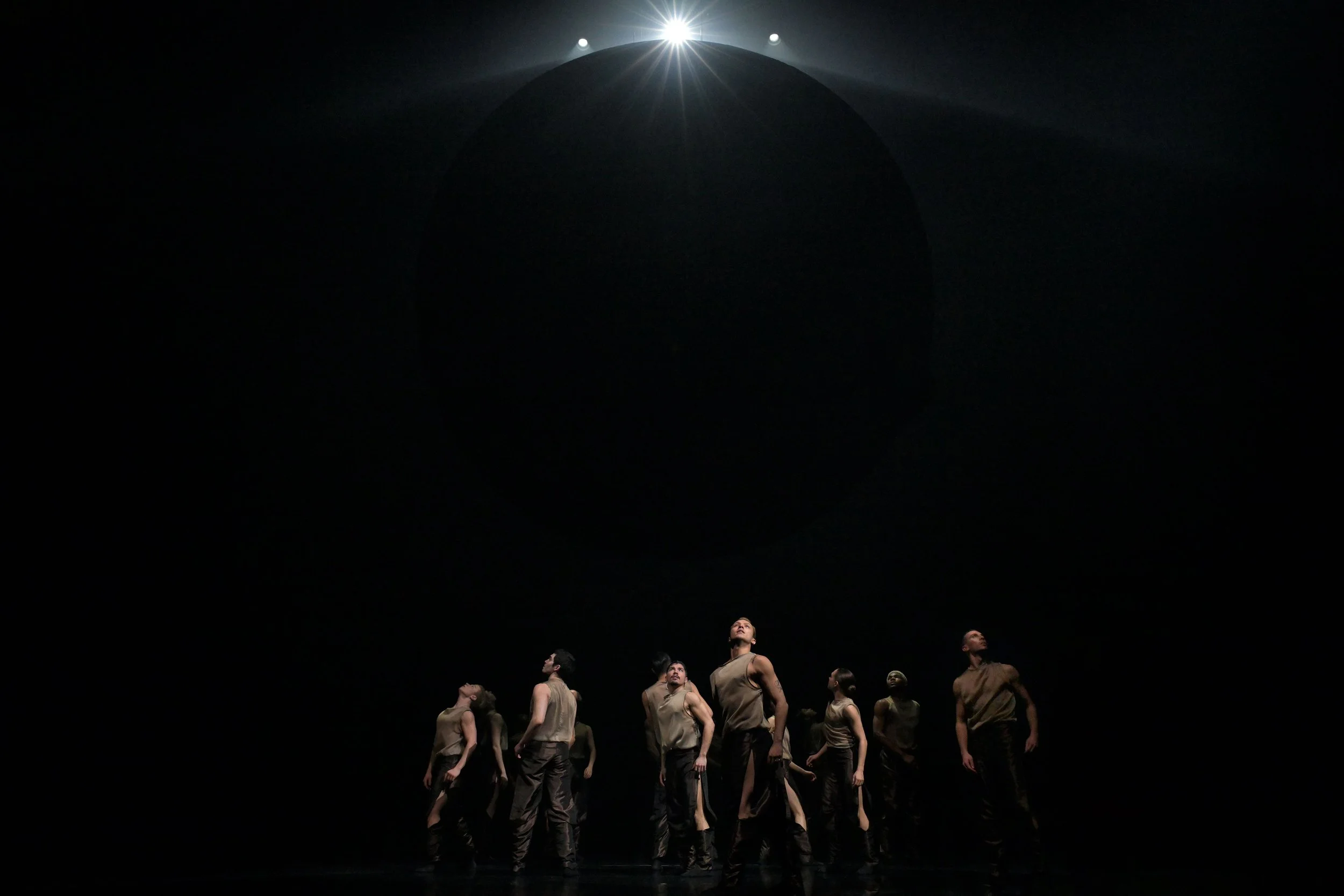Gravity & Other Myths' The Mirror pushes the limits of human endurance
Australian company draws on circus arts and dance for its high-flying work soon having its North American premiere in Vancouver
The Mirror. Photo by Andy Phillipson
DanceHouse and The Cultch present The Mirror from January 24 to 27 at 8 pm at the Vancouver Playhouse
THE PERFORMERS OF Australia’s Gravity & Other Myths are accustomed to feats of physical daring; it’s a contemporary circus company, after all. But its latest work, The Mirror, is by far its most athletically challenging work to date. Think bodies flying high through the air, shape-shifting human pyramids, and, in one especially striking scene, a dancer perched on top of the head of another, spinning in horizontal circles with his belly as the anchor point.
“The struggle and the limits—it’s infinitely watchable,” Darcy Grant, the artistic director of the genre-mashing troupe, tells Stir via Zoom from New South Wales. “There’s a real culture inside the company to a) never recycle content, and b) to always be pushing and searching for a new kind of obsession, a new style of acrobatics or movement or other new language. We spend a lot of time in early phases of development panning for gold, looking for physical languages, and once we find one, we get to elaborate on that and workshop and refine that language.
“There’s one language affectionately known as ‘surf’s up’,” he adds. “It just involves a person lying flat on the floor and another standing on their back. That person gets up to standing with the other person walking up to their shoulders, and they do it over and over and over—50 or 60 times—so it becomes not just a physical feat on its own but after so many repetitions, it becomes about endurance.”
Fresh off of a European tour, The Mirror comes to Vancouver for its North American premiere as part of a nationwide circuit, courtesy DanceHouse and The Cultch. It’s a follow-up to the company’s 2015 performance here of A Simple Space, which blew local audiences away. Co-commissioned by the Sydney Opera House and the Chamäleon Theatre in Germany, The Mirror had its world premiere in Berlin in August 2022.
The Mirror. Photo by Andy Phillipson
The Mirror speaks to the nature and purpose of entertainment itself.
The nine dancer-circus artists took part in the creative process, which started out with the ensemble members talking about what kinds of stories they want to tell.
“I think it’s hard for all of us not to feel profoundly affected after the last few years of disruption, and made us reflect on why we do what we do,” Grant says. “Why do we become performers and spend hundreds of thousands of hours training to ultimately show people what we practice? That led to a deeper discussion about entertainment, and we started to unpack what people want to see, what we want people to see and what we don’t want people to see. It led to deeper questions about why we perform at all and why audiences are in the theatre in the first place.
“We came up with more questions than answers,” he elaborates. “We became really interested in what is a positive level of self-love, and what is a kind of unhealthy level of self-love? What are the motivations to get these things in front of people, and how is that shaped by all the wildly different cues we’re getting through our devices and screens and advertising? It was interesting to unpack and see what those messages were, how we should look, how much of our bodies we should show or not, what is acceptable and what is not. What really became evident is that the company loves being functional. We love to feel strong and comfortable in our bodies and spread a message of body positivity.”
Some of the artists in Gravity and Other Myths started as dancers then became acrobats; for some it was the other way around. “The truth is these days all of those lines between physical forms are getting blurrier,” Grant says. “We value classical circus training but we also value deconstructing that and reconstructing that in new and wonderful ways.”
The Mirror features all floor-based acrobatics, from solos to duets to full group work. There’s a large false proscenium that’s programmable with lights as well as an LED wall that serves as a source of lighting and as a surface for the screening of projections from wireless live-feed cameras that get pulled out throughout the work along with selfie sticks. “The format of that screen mimics the sorts of screens we stare at daily,” Grant says.
One of the performers sings, with the soundtrack by Ekrem Eli Phoenix featuring popular music as well as original compositions. There’s a mixture of songs that everyone will recognize, like George Gershwin’s “Summertime”, all the way through to brand-new electronic tracks.
“We like to have varying levels of accessibility for the work,” Grant summarizes. “If you want a deep dive into meaning that will be there; if you just want more entertainment, that’s there as well. Each one of those audience members can have that experience. It’s incredibly entertaining but it’s also questioning what ‘entertaining’ is. We just hope everyone walks away with a big smile on their face.”















